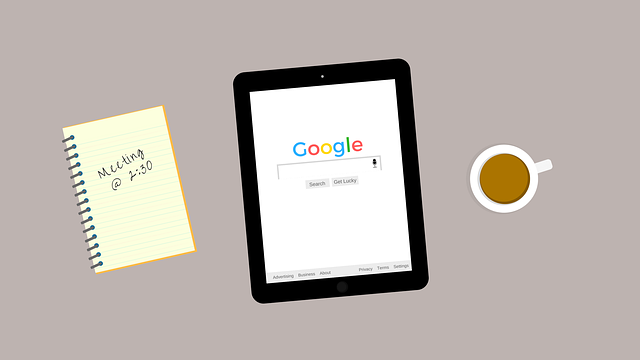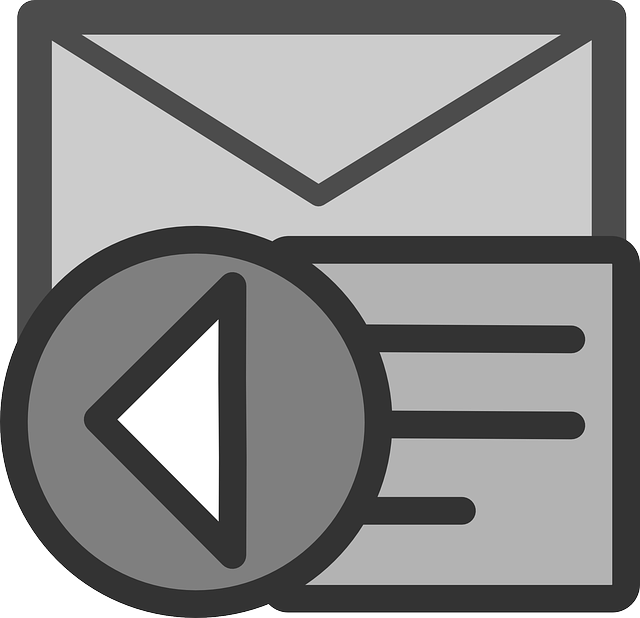Imagine a crowded waiting room at a doctor’s office. The air is heavy with anticipation, and patients anxiously await their turn to be seen. In this fast-paced world of healthcare, where time is of the essence, how can healthcare providers effectively engage with their patients and deliver personalized care?
Enter email marketing, a powerful tool that can bridge the gap between providers and patients, fostering a sense of connection and enhancing the patient experience. Just as a compass guides a lost traveler, email marketing can guide healthcare providers towards a more effective and efficient means of patient engagement.
By tailoring email campaigns to target specific patient groups, providing valuable information and resources, and analyzing email metrics to measure effectiveness, healthcare providers can create a tailored approach to patient care that improves outcomes, satisfaction, and overall engagement.
In this article, we will explore the role of email marketing in patient engagement for healthcare providers and uncover best practices to optimize this valuable communication channel.
Key Takeaways
- Email marketing is a powerful tool for healthcare providers to engage with patients and deliver personalized care.
- Patient education is crucial in email marketing campaigns as it enhances the healthcare experience and provides valuable information and resources to patients.
- Email communication plays a crucial role in increasing patient satisfaction by providing a direct channel for engagement and ensuring important information reaches patients in a timely manner.
- Personalized email content and patient education strengthens the patient-provider relationship, improves patient outcomes, and enhances the overall healthcare experience.
Tailoring Email Campaigns to Target Specific Patient Groups
Tailoring email campaigns allows healthcare providers to effectively engage with specific patient groups, enabling them to deliver personalized and relevant content that caters to the unique needs and preferences of each target audience.
By segmenting patients based on factors such as demographics, medical conditions, or treatment plans, providers can create email campaigns that speak directly to the concerns and interests of different patient groups. This personalized content not only grabs the attention of recipients, but also fosters a sense of connection and trust between patients and healthcare providers.
Patients feel understood and valued when they receive information that is directly relevant to their specific circumstances. This targeted approach enhances patient engagement and encourages active participation in their own healthcare.
By providing valuable information and resources to patients, healthcare providers can empower them to make informed decisions and take control of their health.
Providing Valuable Information and Resources to Patients
Delivering relevant and informative content directly to you can help you stay informed and empowered in managing your healthcare journey. Patient education is a crucial component of email marketing campaigns for healthcare providers.
By tailoring email content to address specific patient groups and their unique needs, providers can offer personalized information that is relevant to their individual healthcare journey. Whether it’s tips on managing chronic conditions, updates on new treatment options, or reminders for preventive screenings, these emails provide valuable resources to help you make informed decisions about your health.
By receiving this personalized content, you can feel more engaged and empowered in your healthcare decisions. This not only increases your satisfaction with the healthcare provider, but also strengthens the patient-provider relationship.
As we explore the next section on increasing patient satisfaction through email communication, you will see how this personalized approach can have a positive impact on your overall healthcare experience.
Increasing Patient Satisfaction through Email Communication
Improve your healthcare experience and satisfaction by receiving personalized emails that cater to your unique needs and preferences. Email communication plays a crucial role in increasing patient satisfaction by providing a direct channel for healthcare providers to engage with patients and address their concerns. By actively seeking patient feedback through emails, providers can gain valuable insights into their patients’ experiences and make necessary improvements. Additionally, email deliverability ensures that important information and updates reach patients in a timely manner, enhancing their overall satisfaction. To help you visualize the impact of email engagement, consider the following table:
| Benefits of Email Communication | Enhanced Patient Satisfaction |
|---|---|
| Personalized information | Improved healthcare experience |
| Timely updates | Increased patient trust |
| Convenient communication | Strengthened patient-provider relationship |
| Easy access to resources | Empowered decision-making |
| Improved coordination of care | Enhanced patient outcomes |
By utilizing email marketing effectively, healthcare providers can improve patient outcomes and foster a stronger connection with their patients.
Improving Patient Outcomes with Email Engagement
Enhancing your healthcare experience is like adding a sprinkle of magic to your journey towards improved health and wellness. One way healthcare providers can achieve this is through personalized email content and patient education.
By sending targeted emails that address specific patient needs, healthcare providers can deliver valuable information and resources right to their inbox. These emails can include tips for managing chronic conditions, reminders for upcoming appointments, and educational materials on preventive care.
By providing patients with this personalized content, healthcare providers can empower them to take an active role in their health and make informed decisions. As you engage with these emails and learn more about your health, you’ll be better equipped to achieve positive patient outcomes.
Now, let’s delve into the next step of analyzing email metrics to measure effectiveness.
Analyzing Email Metrics to Measure Effectiveness
Get ready to dive into the fascinating world of email analytics and discover the powerful insights they can provide for measuring the effectiveness of your personalized content and patient education.
By utilizing email personalization techniques, you can tailor your messages to individual patients, increasing their engagement and satisfaction.
Email open and click-through rates are key metrics that can help you gauge the impact of your campaigns. Monitoring open rates allows you to see how many recipients are actually opening your emails, while click-through rates indicate the number of people who are taking action based on your content.
These metrics can provide valuable feedback on the effectiveness of your email marketing efforts, allowing you to make data-driven decisions to improve patient engagement.
Transitioning into the subsequent section about best practices for email marketing in healthcare, it’s important to understand how to effectively apply these insights to create successful campaigns.
Best Practices for Email Marketing in Healthcare
To maximize the impact of your email campaigns in the healthcare industry, it’s crucial to implement proven strategies and techniques.
One of the best practices for email marketing in healthcare is to create personalized content. Tailoring your emails to the specific needs and interests of your patients will not only grab their attention but also make them feel valued. By using their name, addressing their individual health concerns, and offering relevant information or promotions, you can establish a stronger connection and increase engagement.
Additionally, email automation is essential for streamlining your communication process. It allows you to send timely and targeted emails based on specific triggers, such as appointment reminders or follow-up messages. This automation saves time and ensures that your patients receive the right information at the right time, enhancing their overall experience.
Frequently Asked Questions
How can healthcare providers effectively segment their patient database to target specific patient groups with email campaigns?
To effectively segment your patient database and target specific patient groups with email campaigns, start by analyzing patient data such as demographics, medical history, and preferences. Use this information to create distinct patient segments based on common characteristics or needs.
Tailor your email campaigns to address the unique concerns and interests of each segment, offering personalized content and relevant offers. This targeted approach will enhance patient engagement, foster trust, and ultimately lead to better healthcare outcomes.
What are some examples of valuable information and resources that can be provided to patients through email marketing?
In order to effectively engage patients through email marketing, it’s crucial to provide them with valuable information and resources.
Email content should focus on patient education, resource sharing, and communication strategies. By offering personalized emails tailored to specific patient groups, healthcare providers can enhance patient satisfaction and improve patient outcomes.
Valuable resources may include informative articles, videos, interactive tools, and links to relevant websites.
Tracking email metrics can help providers measure the success of their email segmentation and engagement efforts.
How can healthcare providers ensure that their email communication is meeting the needs and expectations of patients, thereby increasing patient satisfaction?
To improve patient engagement and enhance communication, healthcare providers should prioritize meeting the needs and expectations of patients through email communication.
Start by personalizing emails to address patients’ specific concerns and interests. Use a friendly and empathetic tone to establish a connection.
Provide valuable and relevant information that is easy to understand, and encourage feedback and questions.
By doing so, you can increase patient satisfaction and foster a trusting relationship, ultimately benefiting both patients and healthcare providers.
What are some examples of email engagement strategies that have been proven to improve patient outcomes?
To improve patient outcomes, implementing email personalization and automation is key. By tailoring emails to individual patients, you can address their specific needs and concerns, creating a more personalized experience.
Utilizing automation allows you to send timely and relevant information, such as appointment reminders or medication refills, without overwhelming patients. This not only improves patient engagement but also enhances satisfaction and adherence to treatment plans, ultimately leading to better outcomes.
Remember, "A personalized email a day keeps the doctor away." "A personalized email a day keeps the doctor away, while fostering a strong patient-provider relationship and promoting proactive healthcare management."
What key metrics should healthcare providers focus on when analyzing the effectiveness of their email marketing campaigns?
When analyzing the effectiveness of your email marketing campaigns, there are key metrics that healthcare providers should focus on.
Email marketing metrics such as open rates, click-through rates, and conversion rates are important indicators of engagement and can help you gauge the impact of your campaigns.
Additionally, patient engagement metrics like appointment scheduling, patient portal usage, and patient satisfaction surveys can provide valuable insights into the success of your email marketing efforts.
By tracking these metrics, you can make data-driven decisions to improve patient engagement and ultimately enhance patient outcomes.
Conclusion
In conclusion, email marketing plays a crucial role in patient engagement for healthcare providers.
By tailoring email campaigns to target specific patient groups, healthcare providers can deliver personalized messages that resonate with their audience.
Providing valuable information and resources through email communication not only educates patients but also builds trust and loyalty.
Moreover, analyzing email metrics allows providers to measure the effectiveness of their campaigns and make necessary improvements.
By implementing best practices and utilizing email marketing effectively, healthcare providers can enhance patient satisfaction, improve outcomes, and ultimately deliver better care.
Remember, email marketing is the key that unlocks the door to patient engagement and better healthcare experiences.









